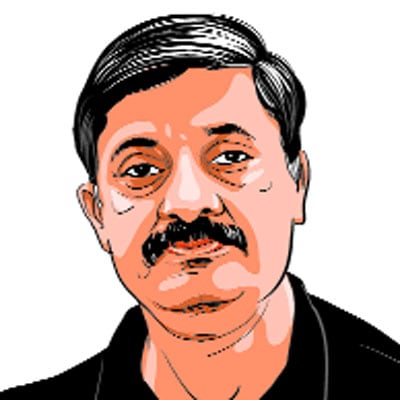Opinion Himachal Pradesh mosque flare-up: When government is disconnected from citizens
We have created a system in which citizens have been taken out of governance. Every once in a while, they push back, seeking some say in how a locality is governed. In the absence of formal powers to govern, they create conditions of chaos, and find new ways of hurting each other
 The issue here is not so much the political or communal dissonances that characterise India.
The issue here is not so much the political or communal dissonances that characterise India. In Himachal Pradesh, the recent flare-up in popular anger against the illegal construction of a mosque in Sanjauli was not a Hindu-Muslim issue at all. It was merely a manifestation of the anger against the absence of governance. In its absence, communities — angry about the hundreds of pinpricks that mark their daily lives — start fighting with each other in the name of religion, caste, etc., latching on to long-standing fault lines. Few today recall that these are the same people who, for the past 10 years — during which period they were governed by both the BJP and Congress — refused to allow sundry “gau rakshaks” the freedom to operate in Himachal Pradesh, unlike in neighbouring states.
The issue here is not so much the political or communal dissonances that characterise India. Nor is it about municipal administration being partial or inefficient. It is about the governance of a locality being completely disconnected from the concerns of those who live there. There is no “citizen” in India; only labharthis, people who have to be given some labh, some privileges, some benefits, by superior beings who run the government from a remote location. That could be an MLA or an MP or even an IAS officer. All people can do is plead before them to shower some manna.
The simple fact is that good governance is based on the principle of subsidiarity — decisions should be made at the level closest to the people. This means that if roads are not being cleaned, street lights don’t work, illegal civil works keep coming up in a locality, and shops and buildings are used for purposes that upset the civic balance, it is the locality’s people who are best placed to keep an eye and escalate the matter to authorities empowered to take corrective actions. This subsidiarity simply does not exist in India.
Civic bodies have existed in India since the 73rd and 74th constitutional amendments made local self-government bodies mandatory in the states. However, these amendments failed to allocate any subjects to local self-government. State governments, which were enjoined by the Constitution to devolve power to local bodies, refused to do so. Instead, newer ways were found to emasculate the latter; their ability for action further eroded. No wonder the actual concerns of the people in their localities remain routinely unaddressed. Worse, the comprehensive monopoly of action that the government exercises substantively prohibits the people of a locality from taking any action to resolve their local issues.
Big issues, ones that have been created by political bigwigs — akin to the Swachh Bharat Abhiyan — get some official response but not so much the smaller problems that impact the normal life of citizens — like actually getting roads and gullies cleaned daily. Or, ensuring that the random parking of buses, trucks, cars, scooters, etc., does not block roads.
Simple matters of public law and order, providing clean drinking water, collecting property tax, building and maintaining roads, religious places and/or community health and schools — all legitimate concerns of the local body — get decided upon and controlled by remotely located administrators. Local bodies have neither the money nor the administrative wherewithal to adequately manage any of them.
State governments routinely control what should be a local matter. Whether it is policemen, doctors, teachers or municipal clerks, local bodies have no powers. This makes the administration of a locality entirely disconnected from the concerns of the local population. Good governance becomes manna that is showered on the locality at the whims and fancies of remote beings.
In India, we have created a system in which citizens have been taken out of governance. Every once in a while, they push back, seeking some say in how a locality is governed. In the absence of formal powers to govern, they create conditions of chaos, increase mutual acrimony, and find new ways of hurting each other.
The writer teaches history at Panjab University, Chandigarh






